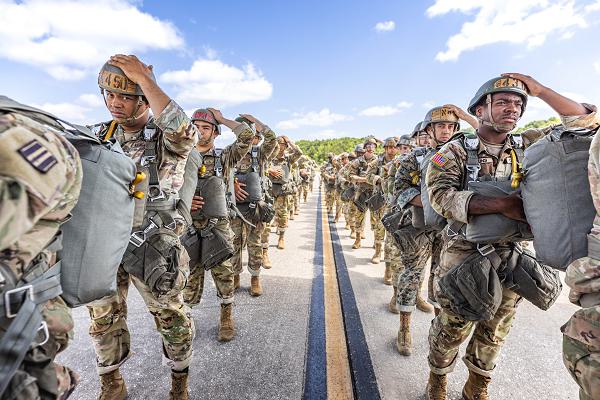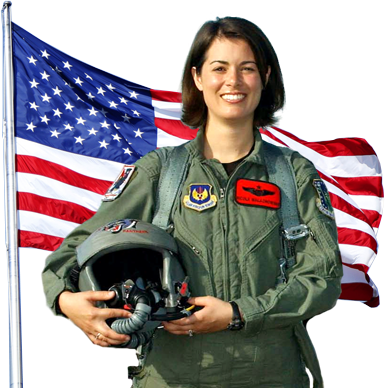
Fort Benning, Georgia. (June 14, 2025): With slogans like “Death from Above”, America’s airborne troops are truly something special. In this photo by Captain Stephanie Snyder, students with Bravo Company, 1st Battalion, 507th Parachute Infantry Regiment jump out of a C-130 during Jump Week at the Basic Airborne Course. The jumps are the final, and most intense phase, of training to become a U.S. paratrooper.
Airborne trainees must complete five parachute jumps from a C-130 or C-17 aircraft, including at least one night jump, to graduate. Before they make their first jump, however, they must pass one of the most demanding physical and mental tests in the world. The three-week Basic Airborne Course is open to troops from all branches and allied military personnel.
The course is divided into Ground, Tower, and Jump Weeks, each presenting its unique challenges.
Ground Week focusses on teaching prospective troopers how to land properly to minimize the potential for injury and they study the parachutes they will use to drop from the sky. Students spend the majority of time learning, practicing, and perfecting their parachute landing fall and how to properly exit from the aircraft. Trainees launch from platforms at various heights into sand pits to simulate the final stage of a parachute landing. To advance in the course, prospective troopers must pass all jump training tests as well as the standard Army physical fitness test in the 17–21 year old range, regardless of the prospective trooper's actual age. This is the phase of training in which the largest number of personnel wash out.
Tower Week involves troopers conducting simulated jumps from a 34-foot tower and a swing landing trainer, a suspended harness that simulates parachute gear. Interestingly, the towers currently in use at Benning came from the 1939 World’s Fair. The Army found that the tower added realism that would otherwise be impossible to duplicate outside of an airplane.
Jump Week requires troopers to make their first, second, and fourth jumps with only a main parachute and a reserve. At least one jump is conducted with full combat equipment, mimicking real-world scenarios, and one must occur at night.
For their final jump, guests and family members are invited to observe and attend the graduation ceremony including helping pin the parachutist wings to their Soldier’s chest. From there, troopers join the long line of American heroes who fight “all together as one.”


